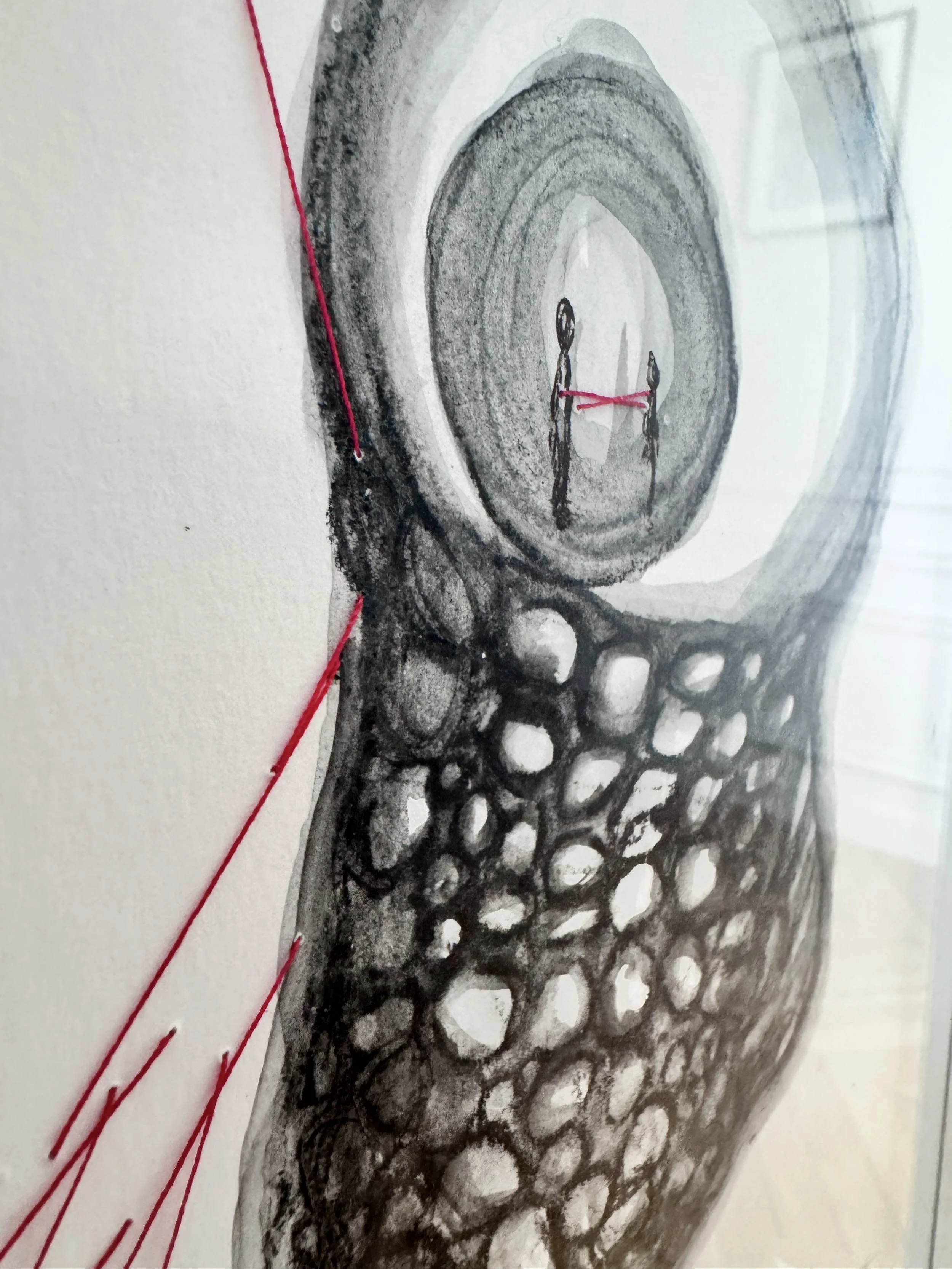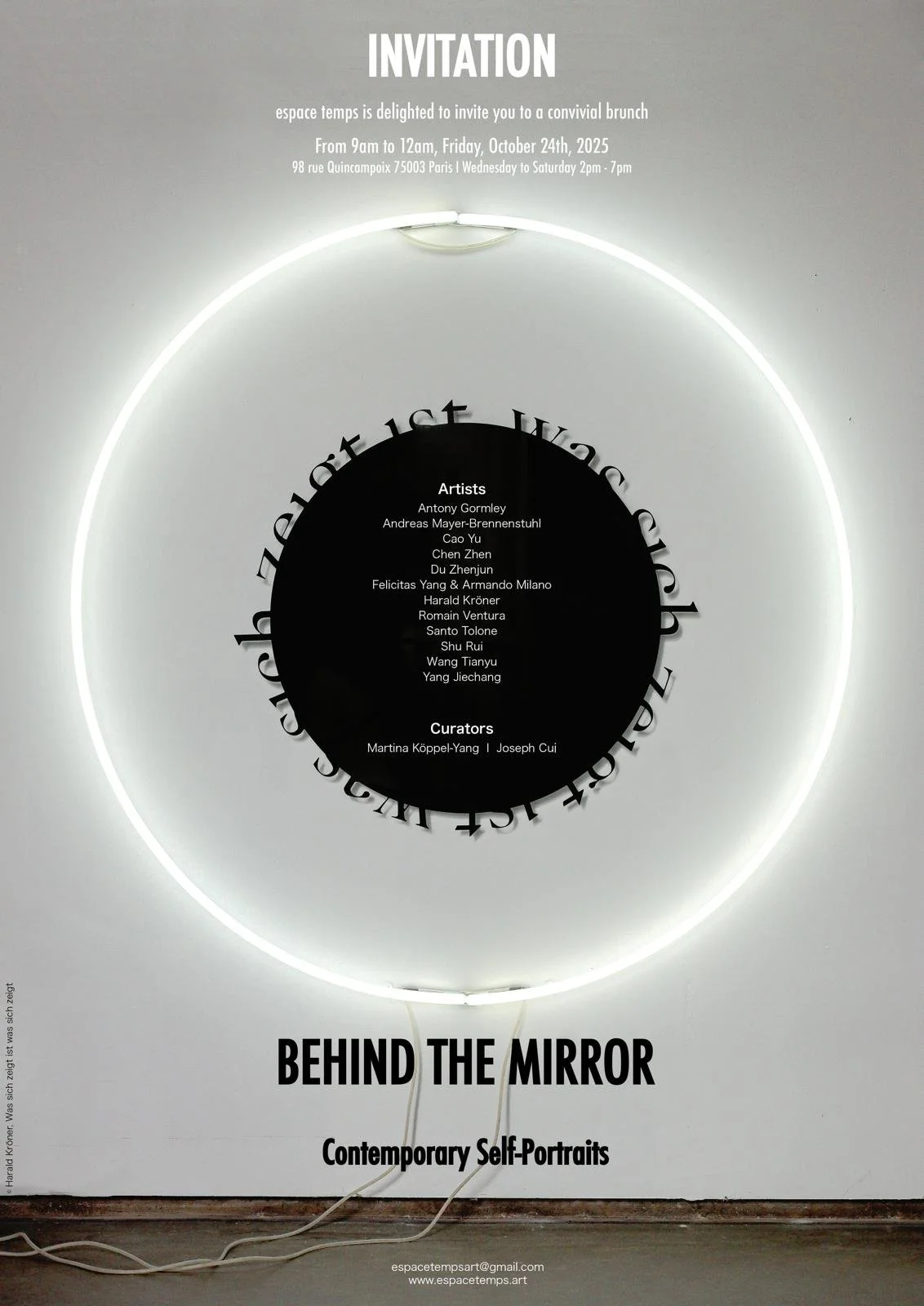EXPOSITION
“ENTRE TERRE ET CIEL”
2025 - 2026
Between earth and sky lies the dwelling place of humankind. Within this fragile yet sensitive body, we carry perception and thought, answering the double summons of beauty and death. As François Cheng reminds us in Five Meditations on Beauty, beauty is not mere visual delight, but the resonance between world and life itself: the blossom of a flower, a spill of light, a distant echo, revealing that life flows in communion with all beings. Yet in Five Meditations on Death, Cheng points to the opposite extreme—endings, disappearance, and inevitable loss. Death gives beauty the weight of time; because all must pass, the present shines with clarity and preciousness.
“Entre terre et ciel” unfolds in this interval. It seeks balance—touching the earth while keeping the gaze lifted toward the sky. Antony Gormley casts the body as a cosmic coordinate; Giuseppe Penone traces the invisible currents of life through trees and stones; Tian Dexi reassembles found objects into poetic fragments that whisper impermanence; Jessica Rankin embroiders mental maps where words and constellations link the inner and cosmic; Pistoletto’s mirrors reflect our cohabitation with space; and the floating world of ukiyo evokes both fleeting joy and the awareness of impermanence.
The exhibition culminates in Chiharu Shiota’s cocoon-like work of red threads—at once separation and connection. Echoing Emanuele Coccia’s vision of the cocoon as a passage of metamorphosis, and Cheng’s union of beauty and death, it becomes an umbilical cord binding self, other, and cosmos. Suspended between earth and sky, the exhibition itself is a cocoon, reminding us that existence is never complete, but always in transformation.
COLLABORATION
“BEHING THE MIRROR”
Contemporary Self-Portraits
Brunch
9h-12h Octobre 24th 2025
Espace Temps / 98 Rue Quincampoix 75003 Paris / espacetempsart@gmail.com
EXPOSITION
“All Men Are Islands”
2024 - 2025
The title of the exhibition, "All men are islands," is clearly a subversive reworking of John Donne's original phrase, "No man is an island."
In terms of definition, an island has clear physical boundaries, which seems to designate it as a closed entity, evoking the tragic narrative of Japan's isolation during the Edo period, as reflected in the works of Season Lao. However, do these boundaries truly serve as obstacles to expansion, as we might assume? Take the Polynesians, for example. Despite the vast distances between Taiwan, Easter Island (Rapa Nui), and Hawaii, the Polynesians were still able to successfully explore and settle these relatively isolated islands. This fact suggests that, for them, the ocean was not an insurmountable barrier but rather a passage leading to new worlds. For the Polynesians, islands are "nodes" that connected one place to another, fostering inter-island trade, cultural exchange, and migration. In fact, the Polynesian sea routes represent a deep understanding and mastery of the sea. It shows the isolation of islands is really only a mental construct of boundaries and limitations in our minds.
Therefore, we might also view seafaring as a form of connection that transcends different dimensions. Just like Michelangelo Pistoletto’s use of mirrors to reflect both the inside and outside, where subject and object meet, he creates an "Espace temps," where the mirror surface becomes a passage where time and space intertwine. Similarly, for Antony Gormley, sculpture is not confined to a given space or dimension; rather, it should create new spaces within existing ones, linking the known world to the unknown. Peihang Benoit, through painting, transcends the lockdowns imposed by the pandemic, taking herself into the deep realms of memory and imagination.
Finally, when we look at the photographs of Jennifer Allora & Guillermo Calzadilla, the figures inside are on a small boat, heading off into the vast ocean without a glance back, we can sense that the seemingly closed island always holds the potential to break through limits and lead to a new openness.
COLLABORATION
“SEASON LAO”
Artist en résidence Square de La Tour Maubourg
du 12 - 19 Octobre 2024
Chez Françoise Viard / 8, square de La Tour Maubourg 75007 Paris
EXPOSITION Taipei
“OBJECT / NON-OBJECT”
26 Février - 26 Mars 2024
十八號舞臺
No. 18, Jinzhuang Rd., Neihu Dist., Taipei City 114601 , Taiwan (R.O.C.)
EXPOSITION
“OBJECT / NON-OBJECT”
2023 - 2024
Is an artwork an object?
Evidently, every being—including humans—may be regarded as an object. Yet an object that can speak, think, sigh, sing, and dance opens a threshold to a wider realm, one that transcends the dichotomy of object and non-object, being and non-being. It would be overly presumptuous to claim that it is our regard alone that alters the meaning of an artwork. Its significance does not rest merely on how we look at it, but rather on how we inhabit the very instant: here, now (hic et nunc).
As Anish Kapoor once observed, “there is no red without black.” In the same way, there is no life without death, and therefore no being without non-being. To grasp this truth—even momentarily—is, in my view, the greatest privilege of being human in this lifetime.
SPONSORS
ASIA NOW
SPECIAL PROJECTS
Wagiwagi
EXPOSITION
“WHY HAVE THERE BEEN NO
GREAT WOMEN ARTISTS ?”
2022 - 2023
Disadvantage may indeed be an excuse; it is not, however, an intellectual position. Rather, using as a vantage point their situation as underdogs in the realm of grandeur, and outsiders in that of ideology, women can reveal institutional and intellectual weaknesses in general, and at the same time that they destroy false consciousness take part in the creation of institutions in which clear thought —and true greatness—are challenges open to anyone, man or woman, courageous enough to take the necessary risk, the leap into the unknown.
—Linda Nochlin
Some may assume that the importance of women artists no longer requires discussion. After all, in today’s art world, it has become almost a matter of political correctness to ensure significant—if not equal—representation in major exhibitions across institutions. Yet at the Novus Art Salon, we wish to reopen this dialogue by revisiting the question famously posed by Linda Nochlin in 1971: Why Have There Been No Great Women Artists?
The phrasing of the question itself presupposes the absence of great women artists. What Nochlin sought to highlight, however, was not the supposed lack of artistic genius, but rather the structural disadvantages—social, institutional, and historical—that constrained women’s participation in the making and shaping of art. How, then, should women artists situate themselves within this legacy? Should their position be to create, to curate, to write new histories, to critique, or, indeed, to compete on equal footing with their male counterparts?
Might the act of artistic creation itself be understood as a champ de bataille—a battleground—for diverse gender identities? And, by the same logic, as a battleground for different ethnicities and nationalities as well?
EXPOSITION INAUGURALE
“MY KIND OF GUY”
2021 - 2022
MY KIND OF GUY…
Our inaugural exhibition takes its name from Susan Hiller’s work My Kind of Guy. Composed of a hundred silk ties collected by the artist over more than thirty years, this fully functional sofa is an invitation to encounters and reunions. On the occasion of the reopening, the time has come for Novus Art to open the doors of its Salon. This space, devoted to our passion for contemporary art, is conceived as a place of exchange for all the different actors of the art world.
Susan Hiller, an anthropologist by training and at heart, long made society one of the main threads of her research. She is the starting point of our exhibition, where the silhouette of Man is a recurring motif. Indeed, it reappears constantly in Antony Gormley’s paintings and sculptures, which focus on the representation of Man in space; in Chiharu Shiota’s work, which explores the memory of human presence; and also in Susan Hiller’s sofa, where the multitude of ties evokes a multitude of individuals.
…BUT IN WHAT KIND OF WORLD ?
However, in revealing to us her Kind of Man, Hiller naturally leads us toward a broader questioning: What kind of world do we live in, and what kind of world do we want to live in? In the wake of a pandemic that severely impacted the cultural sector, it seemed essential to us to present works that nurture this reflection as we celebrate this great return to life.
Through their sculptures, these artists bear sensitive witness to the environments in which they have evolved and the themes that have inspired them. Tracey Emin’s luminous neons were born from the observation of her hometown; Kimiyo Mishima’s ceramics draw from the consumer society of her country; Takis’s Signals emerged during his travels in Paris; and the sculptural paintings of Taiwanese master Richard Lin go hand in hand with his interest in architecture.
The presentation of My Kind of Guy is also an opportunity to reaffirm that the world of Man is equally the world of women. By highlighting the female artists in our collection, we are fully committed to honoring women of the past and present, with the aim of contributing to the world of tomorrow.









